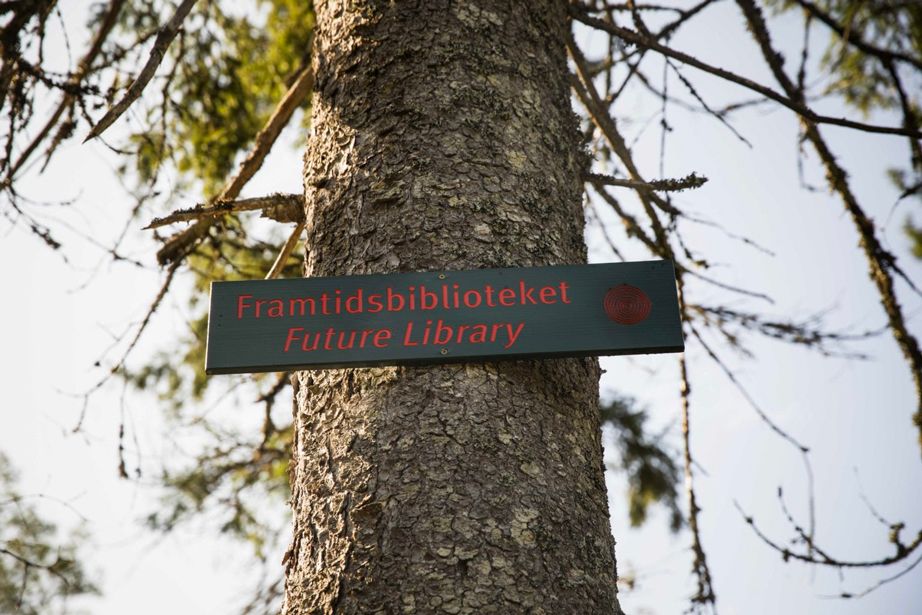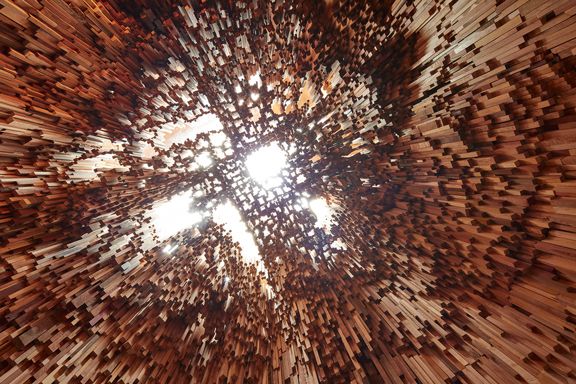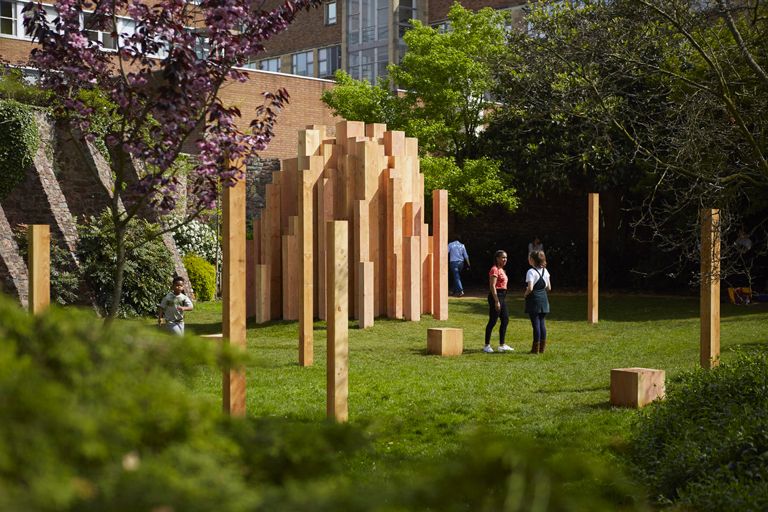In a forest just outside Oslo, a thousand trees have been planted and will be guarded there for one hundred years. At the end of this century when the original creators are long gone, the trees will be felled and turned into paper for a unique anthology of books. For the next 100 years every year an author will be invited to write an unpublished manuscript that will only be shared at the end of the century.

“It began as a scribble on a notebook…making a visual connection between the rings of a tree and the pages of a book,” says Katie Paterson, the artist behind The Future Library project.
The Future Library project and exhibit is as existential as it is expansive. For the exhibition to reach completion, hundreds of people, including authors, library staff and forestry workers, need to continue to collaborate and believe in the idea behind it. More worryingly: for the project to be completed, it would require that there be human beings around 100 years from now who still have the heart and resources to care about art and literature.
The presentation of the manuscript is conducted with a ceremonial walk through nature with the author and a reading of their choice.
In June of this year, the long-postponed handover ceremony will take place in the new Deichman Bjørvika public library in the silent room designed by Paterson and two other architects. During this ceremony, the works of three new authors will be inducted into the collection: Karl Ove Knausgård (Norwegian novelist), Ocean Vuong (Vietnamese American poet and author) and Tsitsi Dangarembga (Zimbabwean novelist, filmmaker and playwright). The writers are invited yearly, rather than in advance, to keep the project fresh and fluid, and the selection is the task of the Future Library Trust.
The Future Library started in 2014 and will continue till 2114. Many noteworthy authors have been inducted into the collection with completely unseen works, including as Margaret Atwood, who compared it to donating a kidney. The only difference is this sacrifice is made to an invisible generation whom the authors will never get to see — who don’t even exist yet.
“I can’t reveal anything about what I am writing, but the project goes right back to that phase of our childhood when we used to bury little things in the backyard, hoping that someone would dig them up long in the future,” said Atwood about her book, Scribbler Moon.
The manuscripts will be on display in the specially designed silent room of the New Deichmanske Library in Oslo — a library where none of the books can be read and none of the works have been published.
“Future Library has nature, the environment at its core and involves ecology, the interconnectedness of things though it is living now and still to come,” Paterson said. “It questions the present tendency to think in short bursts of time making decisions only for us living now the timescale is 100 years and not vast in cosmic terms however in many ways the human time scale of 100 years is more confronting it is beyond many of our current life spans but close enough to come face to face with face with it to comprehend and relativize.”
Patersons works are often large-scale and almost always intersectional and multidisciplinary. She has pitched her tent in the middle ground where science, conservation and art meet, making herself quite at home there.
“I’m working with scientists and experts in other fields on a daily basis. For me, it’s the norm. Perhaps I take it for granted, but I can’t say I feel it’s undervalued; there is so much space and enthusiasm for interdisciplinary working,” she said. “It’s a privilege to be able to switch from geosciences to genetics, biochemistry to perfumery, forestry to horology, all in one week!”
Paterson’s works ask us to consider how connected we are to the earth, the universe and all those who come after us; her oeuvre is a dialogue with the science and art of deep time.
Her 2007 exhibit Vatnajökull invited members of the public to phone a number that would allow them to listen to the sound of glaciers melting in Iceland in what Paterson described as a “graveyard of ice”.


In 2016, she collaborated with architects Moye and Zeller for a project entitled Hollow. Together, they collected thousands of samples of tree species across the world, from common ones, to endangered species, to sacred trees, creating a stunning tribute to the lungs of the earth. The artwork was erected at the University of Bristol’s Life Science department.
“Though trees are so ubiquitous, perhaps we take for granted their great diversity and our absolute reliance on them to live,” Paterson said in an interview with 52 Insights..
There have been very few opportunities where authors have had to think so explicitly about the way their works will live beyond them and about how their work will be viewed by future generations. Asking a writer to pour a year of their life into a work that will never be read in their time. Asking hundreds of forestry workers and librarians to guard and preserve the forests and manuscripts they will never reap benefit from. Asking every person involved to gift pieces of themselves to future generations.
In the words of Margaret Atwood:
“A vote of confidence, that despite the catastrophic shadows under which we live, the future will still be a brightish place willing and able to complete an artistic endeavour begun by long-dead people a century ago.”
Just as this project asks those involved to shout into the void hoping there will be someone to hear the echoes, we are asked to make conservation, sustainability and climate change action part of our lives in order to preserve today what we cannot see tomorrow. For this reason, Paterson’s work supports the United Nations Sustainable Development Goals for Responsible Production and Consumption and Climate Action.
Learn more about The Future Library here or find out how you can prevent deforestation here. You can also watch Katie Paterson’s TED Talk here.
